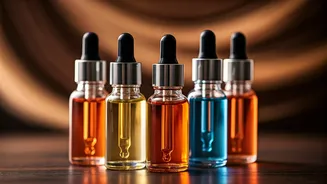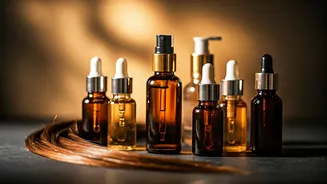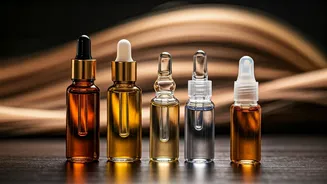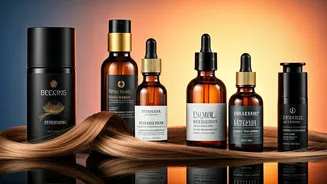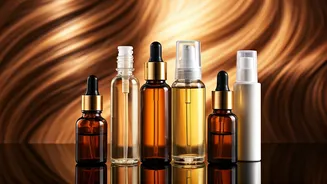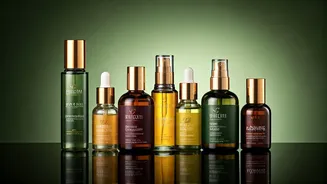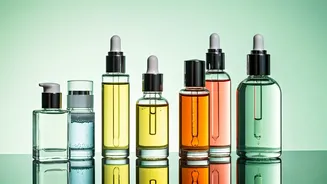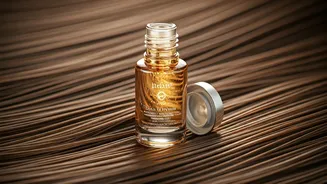Serum Selection Criteria
Choosing the right hair growth serum can be a challenge with so many options available. Several factors should guide your selection. First, consider the ingredients.
Look for products containing proven ingredients like minoxidil, peptides, and natural extracts known to promote hair growth. Secondly, evaluate your hair type and concerns. A serum designed for dry, damaged hair might not suit oily hair. Finally, consider user reviews and ratings. These provide real-world insights into a product's effectiveness and potential side effects. Always prioritize products backed by scientific research and positive customer experiences to maximize your chances of success and safety.
Minoxidil-Based Serums
Minoxidil is one of the most well-known and scientifically-backed ingredients for hair growth. Originally developed as a blood pressure medication, it was later found to stimulate hair follicles. Minoxidil-based serums are available in various concentrations, with 5% being a common strength for men and 2% often recommended for women. These serums work by widening blood vessels, which improves blood flow to the hair follicles, thereby promoting hair growth. While effective, minoxidil can sometimes cause scalp irritation or unwanted hair growth in other areas, so users should carefully follow the instructions and be aware of potential side effects.
Peptide-Infused Serums
Peptides play a crucial role in hair health by stimulating the scalp and hair follicles. These amino acid chains help to build and repair the proteins that make up hair. Peptide-infused serums often contain multiple peptides, each targeting different aspects of hair growth. Some promote cell proliferation, while others encourage the production of keratin, the primary protein in hair. These serums are generally well-tolerated and can be incorporated into a daily hair care routine to support healthier, fuller hair. Look for serums with peptides like Capixyl or Acetyl Tetrapeptide-3 for optimal results.
Natural Extract Serums
Many hair growth serums harness the power of natural extracts. These serums often contain ingredients such as saw palmetto, which is believed to block DHT (a hormone associated with hair loss), and rosemary oil, known for its anti-inflammatory properties and ability to boost circulation. Other beneficial extracts include caffeine, which can stimulate hair follicles, and biotin, a B vitamin that supports healthy hair. Natural serums offer a gentler approach to hair growth and can be a good option for those seeking products with fewer synthetic chemicals. However, it's essential to check for any potential allergies or sensitivities to natural ingredients.
Application Techniques
Proper application is crucial for maximizing the effectiveness of a hair growth serum. Most serums should be applied directly to the scalp, typically once or twice daily, depending on the product's instructions. Use the applicator to part your hair and apply the serum evenly to the areas where hair growth is desired. Gently massage the serum into the scalp for a few minutes to improve absorption and stimulate blood flow. Consistency is key; make sure to apply the serum regularly. Some serums may recommend application on dry or damp hair; always read and follow the specific product instructions for the best outcome.
Combining Products
Enhance your hair growth efforts by integrating different products into your routine. Consider combining a serum with a hair growth shampoo, which can cleanse the scalp while delivering growth-promoting ingredients. Furthermore, a balanced diet rich in vitamins and minerals is essential for hair health. Supplements such as biotin, iron, and zinc can also support hair growth. While combining products can boost effectiveness, be cautious. Overuse can cause product buildup or irritation. Always introduce new products gradually, and monitor how your hair and scalp respond. Prioritize products that complement each other and work synergistically.
Managing Expectations
While hair growth serums can be incredibly effective, it's crucial to manage your expectations. Results vary depending on the individual and the cause of hair loss. Significant changes usually take several months of consistent use. Be patient and persistent. If you're not seeing results after a few months, consider consulting a dermatologist who can provide a more in-depth assessment and potentially recommend other treatments. Remember, maintaining a healthy lifestyle, including a balanced diet, adequate sleep, and stress management, is also crucial for overall hair health. Set realistic goals, and celebrate small improvements along the way.
